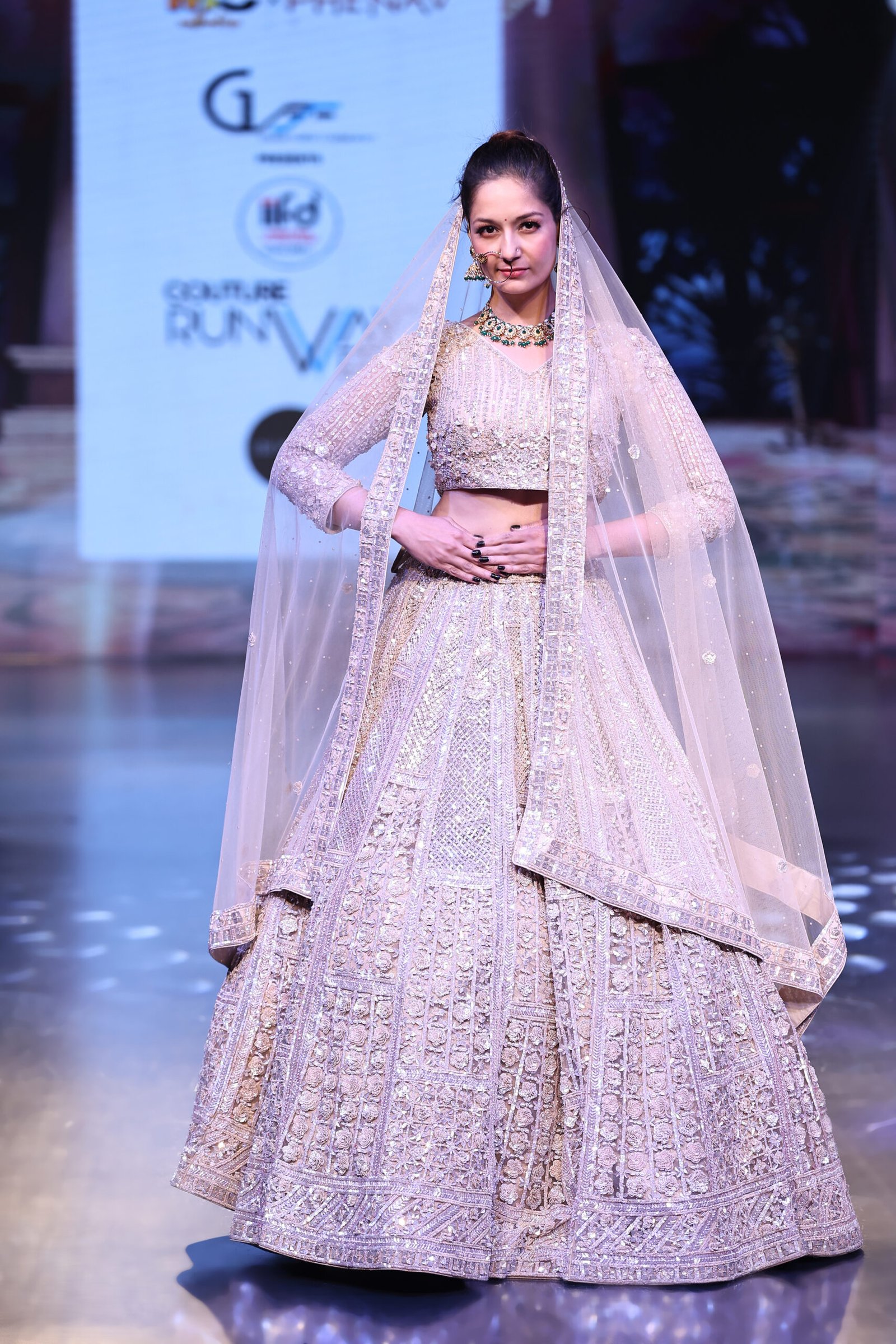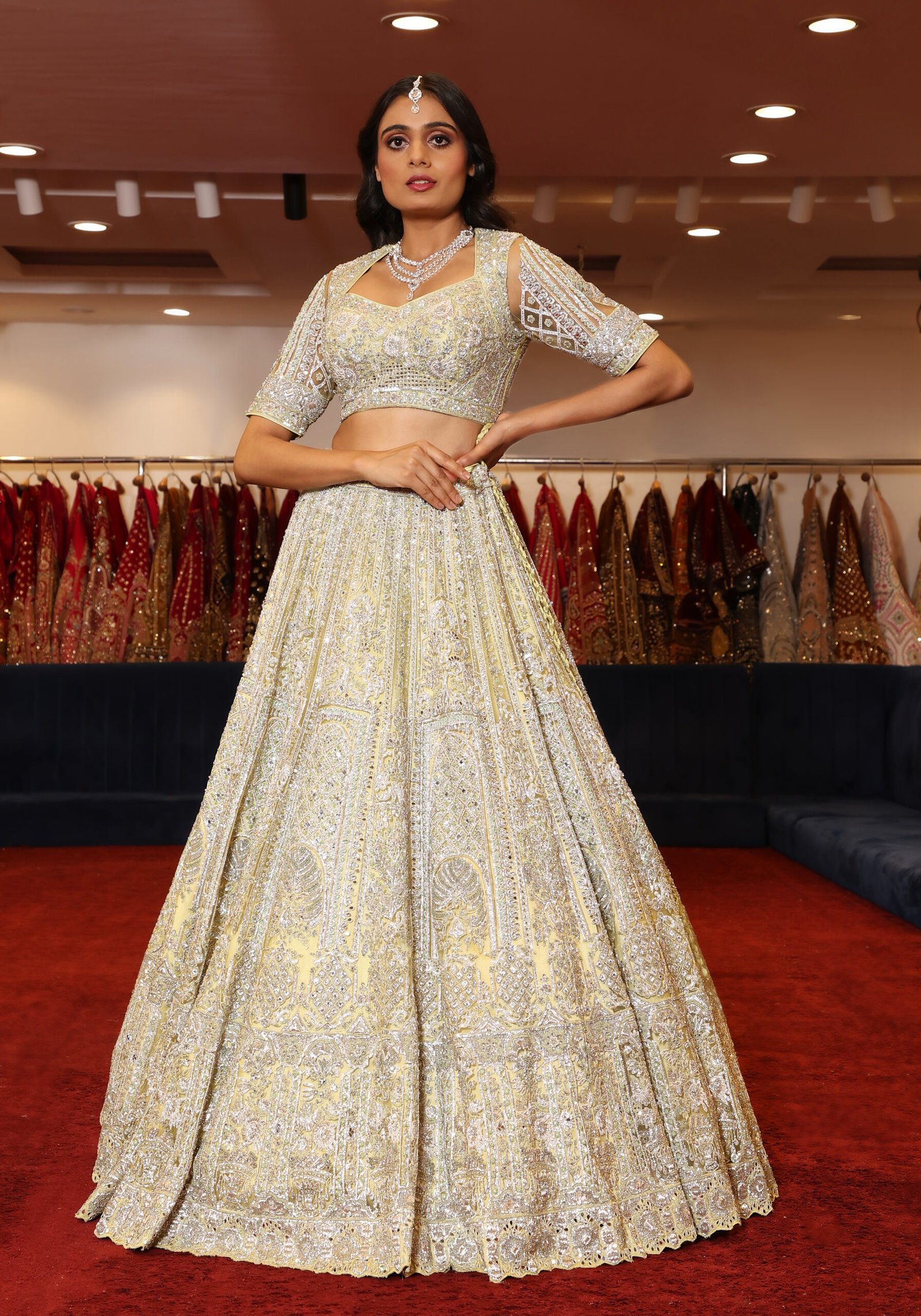The Elegance of Mehndi Lehenga: A Timeless Tradition
Mehndi, a celebration of love, laughter, and intricate artistry, marks the prelude to a joyous union. Amidst the vibrant festivities, the Mehndi ceremony holds a special place, where the bride adorns herself in resplendent attire, often donning a Mehndi lehenga that epitomizes tradition and elegance. We dig into the essence of Mehndi lehengas in this story, examining its historical importance, current fashions, and timeless appeal.
Historical Significance:
The tradition of lehenga for women, rooted in ancient civilizations, transcends time and culture. Across various cultures, applying henna has symbolized auspiciousness, protection, and celebration. In Indian weddings, Mehndi holds immense cultural significance, believed to signify love, prosperity, and the bond of marriage. The Mehndi ceremony, with its origins in the Indian subcontinent, has evolved into a grand affair, characterized by music, dance, and elaborate rituals.
The Mehndi Lehenga: A Symbol of Tradition and Elegance:
Central to the Mehndi ceremony is the bride’s attire, with the Mehndi lehenga occupying a place of prominence. Traditionally, Mehndi lehengas were adorned with intricate embroidery, reflecting the rich craftsmanship of Indian artisans. Vibrant hues such as yellow, green, and orange dominated the color palette, symbolizing joy and festivity. The silhouette of the Mehndi lehenga, often featuring voluminous skirts and embellished blouses, exuded opulence and grace.
Contemporary Trends in Mehndi Lehengas:
In recent years, lehengas have witnessed a fusion of traditional aesthetics and modern sensibilities. Designers have reimagined the Mehndi lehenga, incorporating contemporary elements while retaining its timeless charm. Lighter fabrics such as georgette and chiffon have gained popularity, offering comfort without compromising on style. Intricate mirror work, thread embroidery, and sequin embellishments add a touch of glamour to Mehndi lehengas, reflecting the bride lehenga individuality and personality.
The Mehndi Lehenga: A Reflection of Culture and Identity:
Beyond its aesthetic appeal, the Mehndi lehenga serves as a symbol of cultural identity and heritage. Each motif and embellishment carries symbolic meaning, reflecting the customs and traditions of the bride’s community. From the intricate paisley motifs of Rajasthan to the vibrant floral patterns of Punjab, Mehndi lehengas celebrate the diversity of Indian culture, uniting different traditions in a tapestry of beauty and elegance.
The Evolution of Mehndi Lehengas:
Over the years, Mehndi lehengas have evolved to embrace global influences while staying true to their cultural roots. International designers have drawn inspiration from Indian craftsmanship, infusing Mehndi lehengas with contemporary silhouettes and avant-garde designs. The result is a fusion of East and West, where traditional craftsmanship meets modern innovation, creating Mehndi lehengas that are both timeless and trendsetting.
Conclusion:
In the tapestry of Indian weddings, the Mehndi ceremony stands out as a celebration of love, joy, and cultural heritage. At the heart of this celebration lies the , a symbol of tradition, elegance, and individuality. From its historical significance to its contemporary evolution, the Mehndi lehenga continues to captivate hearts with its timeless allure, weaving together the threads of tradition and modernity in a celebration of love and togetherness.









